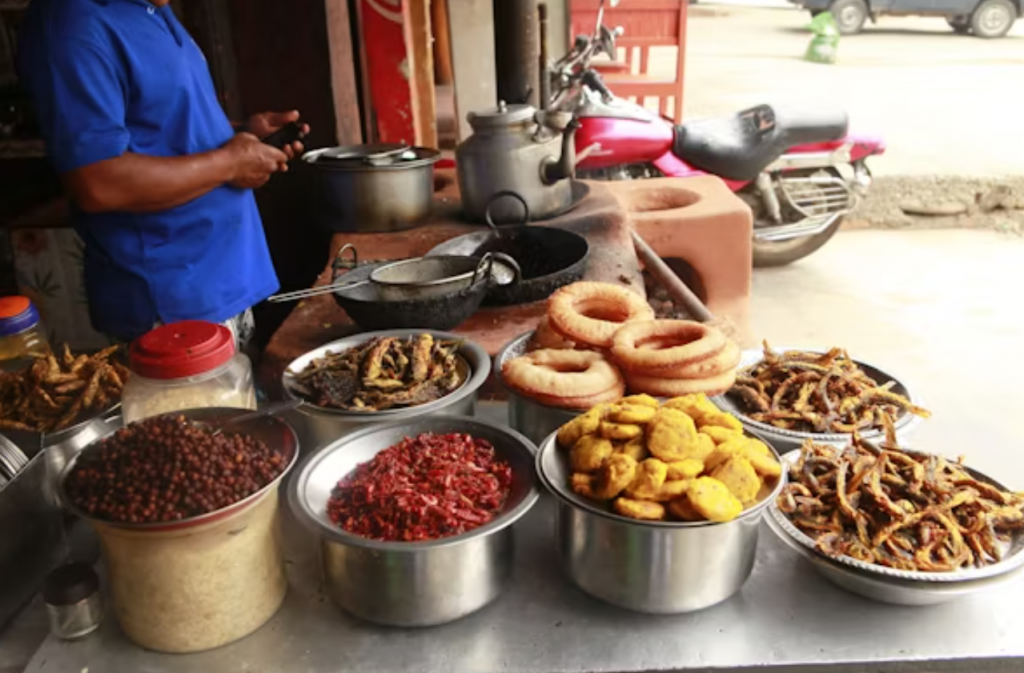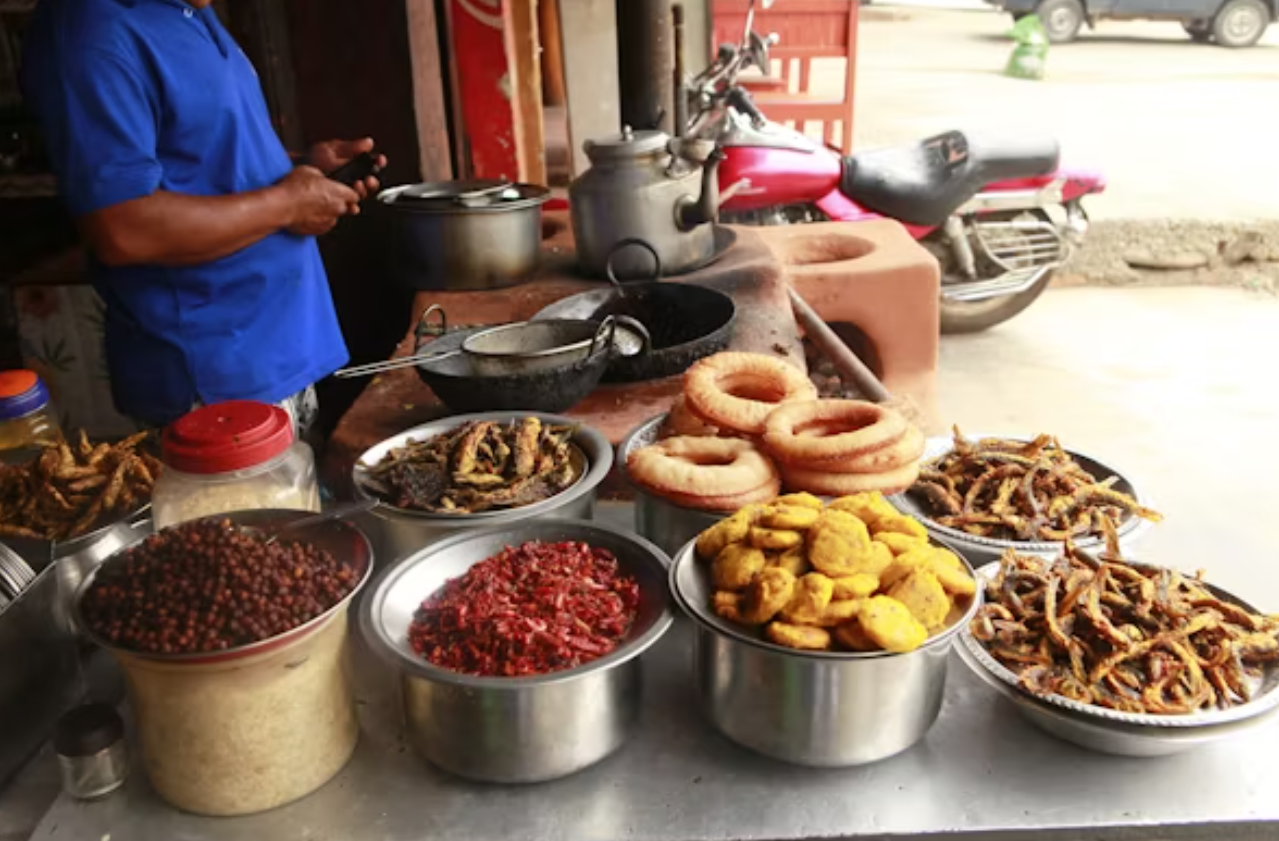Introduction to Indian Street Food
Indian street food is a gastronomic adventure that tantalizes the taste buds with its vibrant colors, bold flavors, and diverse ingredients. From the bustling streets of Delhi to the busy markets of Mumbai, street food is not just about food; it’s a cultural experience. Whether you’re an avid spice lover or a newcomer to Indian cuisine, the flavors of Indian street food will leave you craving for more.
What is Indian Street Food?
Indian street food is a mix of flavorful, quick-to-prepare dishes served from small roadside carts, stalls, and food trucks. These dishes are often simple, but packed with a variety of ingredients and, of course, spices. Street food in India is a reflection of the country’s rich history, cultural diversity, and unique culinary heritage.
Historically, Indian street food evolved from the availability of local ingredients, regional cooking styles, and the influence of various dynasties and empires. Over time, this cuisine became accessible to everyone—from the poor to the rich—and is now enjoyed by millions every day.
The Role of Spices in Indian Cuisine
Spices are at the heart of Indian street food, and they are what give these dishes their signature taste. India is home to a vast array of spices that create layers of depth and complexity in food. The beauty of Indian street food lies in its careful balance of spice, sweetness, sourness, and saltiness.
Some of the most commonly used spices in street food include turmeric, cumin, coriander, cardamom, and garam masala. But the real star of the show is chili—fresh, dried, or powdered. Chili adds both heat and flavor to Indian dishes, giving them their characteristic intensity.
The Heat Factor: How Spices Make Indian Street Food Unique
Indian street food stands out for its boldness—thanks to the high heat factor that comes with the liberal use of spices like chili. But don’t be fooled by the heat; it’s not just about burning your mouth. The heat is balanced with other ingredients that add layers of flavor, creating a complex taste experience.
Chili is often paired with tangy tamarind, cooling yogurt, or sweet chutneys to create a balance of flavors that hit different taste receptors in your mouth. It’s this combination that makes Indian street food so addictively good.

Popular Indian Street Food Dishes
Pani Puri
Pani Puri is perhaps the most famous Indian street food. These crunchy, hollow balls are filled with spicy tamarind water, chickpeas, potatoes, and a variety of spices. The dish is known for its burst of flavor with each bite. Pani Puri is a street food favorite, and you can find it everywhere from the bustling lanes of Delhi to the quiet alleys of Kolkata.
Samosas
Samosas are another staple in Indian street food culture. These crispy pastries are typically filled with a savory mixture of spiced potatoes, peas, and sometimes meat. They are deep-fried to perfection and served with mint chutney or tamarind sauce. While samosas are popular all over India, the fillings and spices vary from region to region.
Chaat
Chaat is a category of Indian street food that includes a wide range of snackable items, from dahi puri to bhel puri. These dishes are often a combination of crunchy, tangy, and spicy elements. Chaat is known for its customizable nature—ingredients like puffed rice, potatoes, yogurt, and a variety of chutneys are mixed together in different ways depending on the region.
Regional Variations: Indian Street Food Across States
Street food is as diverse as India itself. Each state has its own take on traditional dishes, and this regional variation is what makes Indian street food so exciting.
Street Food in Delhi
Delhi, the capital city, offers some of the most iconic street foods in India. From chole bhature to paratha rolls, Delhi’s street food culture is known for its variety and flavor. The city is also famous for its kebabs, which are grilled to perfection and served with naan or paratha.
Street Food in Mumbai
Mumbai, the city that never sleeps, has a vibrant street food scene. Vada pav, pav bhaji, and bhel puri are some of the most popular dishes in Mumbai. These snacks are often enjoyed on the go, making them a perfect reflection of the city’s fast-paced lifestyle.
Street Food in Kolkata
In Kolkata, street food is an integral part of life. The city is famous for its jhal muri (spicy puffed rice), kathi rolls, and fish cutlets. The flavors in Kolkata street food are often bold and pungent, with mustard oil and spices dominating the palate.
How Street Food Reflects India’s Culture
Street food is an essential part of Indian culture. It’s not just about eating—it’s about community, celebration, and tradition. Street food vendors often serve as the heart of the neighborhood, bringing people together to share a meal, gossip, and enjoy life.
Whether it’s in a small rural village or a bustling metropolitan city, the act of eating street food has a communal, festive feel. It’s a moment of connection with the local culture, offering a taste of tradition and a glimpse into the daily life of India.
Health Considerations: Is Indian Street Food Safe?
As tempting as street food can be, it’s important to consider food safety, especially when eating from street vendors. While many vendors adhere to strict hygiene standards, others may not, and consuming poorly prepared food can lead to foodborne illnesses.
To safely enjoy street food, always look for vendors who prepare food fresh in front of you, and avoid anything that looks like it’s been sitting out for too long. Also, try to consume cooked food, as it’s less likely to harbor harmful bacteria.
How to Recreate Indian Street Food at Home
If you’ve tasted Indian street food and want to recreate it at home, it’s easier than you might think. Start by gathering essential ingredients like chickpeas, tamarind, puffed rice, and spices. Then, use online recipes or cookbooks to guide you in making dishes like Pani Puri or Samosas.
Step-by-Step Guide to Making Pani Puri at Home:
- Prepare the puris by deep-frying small dough balls until they are crispy.
- Prepare the tamarind water (pani) by mixing tamarind extract, spices, and water.
- Assemble the puris by poking a hole in the center and filling them with potatoes, chickpeas, and the tamarind water.
- Serve immediately for a delicious burst of flavor!
The Future of Indian Street Food
Indian street food is not just a trend—it’s becoming a global phenomenon. As India’s food culture spreads worldwide, more and more people are discovering the bold flavors of street food. In India, street food is evolving too, with vendors innovating new dishes and offering healthier alternatives to traditional fried foods.
Conclusion: Spice It Up and Savor the Bold Flavors of India
Indian street
4o

No responses yet